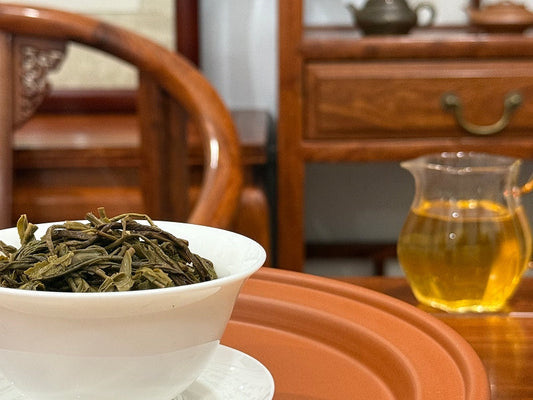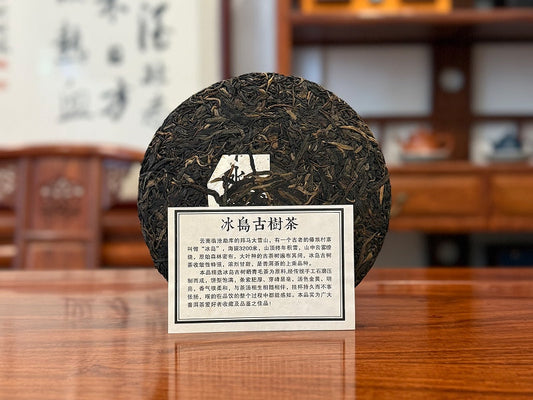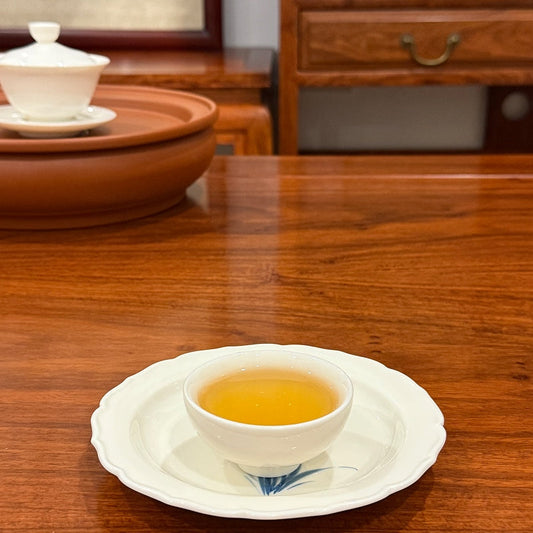Pu-erh Names & Spellings: Solve the Terminology Maze
Pu-erh tea is one of China’s most unique and culturally rich teas—but before you can enjoy it, you may first need to solve a surprisingly common problem: how to recognize it by name.

Online and offline, you’ll encounter a kaleidoscope of Pu-erh tea spellings—from Pu’er to Puerh, Pu-erh, and even Po Lei. For new tea drinkers and seasoned buyers alike, understanding these Pu-erh tea spelling variations is more than a trivia question—it’s the first step to buying wisely and identifying authentic tea.
This article will guide you through the most common English spellings, historic naming variations, and how to interpret terms you’ll see on packaging or in online shops. Let’s solve the terminology maze.
➔ Dive deeper: Buy Pu-erh Tea — A Guide to China’s Unique Tea
Common English Spellings of Pu-erh Tea

The word Pu-erh comes from the Pu’er (普洱, pǔ’ěr) region of Yunnan Province in southwest China, where this tea was historically traded. Over centuries of trade and cultural exchange, the name has evolved into several forms in the English-speaking world.
Pu-erh tea
This is the most common and internationally standardized form. The hyphen and “-erh” suffix stem from 19th-century British transliterations, designed to make Chinese pronunciation more readable in English. Today, it remains the dominant spelling in global tea catalogs, books, and search engines.
Pu’er tea
This version stays true to the modern pinyin system—Pǔ’ěr—and includes the apostrophe to preserve the original pronunciation. It’s commonly used by those who prioritize linguistic accuracy and cultural authenticity.
Puerh tea / Puer tea
These minimalist spellings remove the apostrophe and hyphen entirely, making them easier to type and more compatible with search engines. You’ll often see these on e-commerce platforms. They represent a modernized approach to traditional tea.
Pu-er tea
A rarer and more informal simplification. Though not widely adopted, it reflects a growing trend toward brevity in branding, especially for Western audiences.
Po Lei / Bolay
These are Cantonese transliterations of 普洱, historically used in Hong Kong, Southeast Asia, and older overseas Chinese communities. You may still spot them on vintage tea labels, old packaging, or signage in traditional teahouses.
Pro Tip: All these names refer to the same type of tea—Pu-erh, made from Camellia sinensis var. assamica and processed in Yunnan. Differences in spelling don’t imply differences in quality or type.
To help users from different language backgrounds better find and identify our teas, the Chinese Tea Group’s Pu-erh Tea Collection uses multiple common Pu-erh spellings in product titles. Each product includes origin traceability and flavor descriptions.
Alternative Names and Related Terms

In addition to spelling variants, Pu-erh tea is also referred to by several descriptive or category-based terms. These often appear on packaging, product listings, or in tea education materials.
Dark Tea (Hei Cha)
Pu-erh belongs to China’s broader dark tea category. This can create confusion for those comparing Pu-erh tea vs dark tea, but essentially, all Pu-erh is dark tea—though not all dark tea is Pu-erh.
Pu-erh Cake, Tuocha, Dragon Ball
These describe the form of the tea—whether pressed into cakes (bingcha), bowl-shaped tuocha, or small spheres. Understanding these terms helps you choose the right shape for storage or brewing.
Aged Tea / Vintage Tea
Pu-erh’s value often increases with age, and terms like vintage Pu-erh tea or aged Pu-erh highlight its maturity, much like fine wine.
Yunnan Pu-erh / Chinese Pu-erh
These emphasize geographic authenticity and help distinguish genuine tea from similar fermented teas produced elsewhere.
Why So Many Names?

The diversity of Pu-erh names is the result of three key factors:
Historical Romanization Systems
Before pinyin was standardized, older systems like Wade-Giles produced Pu-erh and other spellings.
Regional Dialects
Cantonese and local pronunciations shaped names like Po Lei or Bolay.
Modern Search Optimization
Digital platforms favor simplified, punctuation-free spellings that are easier to find online.
Understanding this history helps you search more effectively, avoid confusion, and appreciate the cultural background of the tea.
Continue your Pu-erh journey: Buy Pu-erh Tea — A Guide to China’s Unique Tea
Practical Tips for Buyers

When shopping for Pu-erh tea online or in stores, keep these in mind:
- Try multiple keyword variations when searching, such as Pu-erh tea, Puerh tea, or aged Pu’er.
- Watch for authenticity indicators, including Yunnan origin, vintage year, and whether the product is labeled raw (sheng) or ripe (shu).
- Be cautious of products labeled “dark tea” without specifying Pu-erh.
- Understand form-based terms like Pu-erh cake or mini tuocha to pick the style that suits your brewing and storage needs.
- Buy from sellers who clearly explain their tea’s origin and use consistent terminology across listings.
Try searching “pu-erh tea where to buy” — or visit a trusted source like Chinese Tea Group, where each product includes origin traceability, flavor notes, and expert curation.
Conclusion

Navigating Pu-erh tea names might feel confusing at first, but with a little background, the picture becomes clearer. These different spellings and alternative names don’t indicate different teas—they reflect a rich legacy of global exchange, linguistic evolution, and adaptation.
By mastering Pu-erh tea terminology, you’re not just avoiding buyer confusion—you’re beginning a journey into a world of heritage, flavor, and discovery.
Ready to take the next step?
➔ Raw vs Ripe Pu-erh: Choose Sheng or Shu Wisely
➔ How to Buy Pu-erh Tea: Basic Tips & Trusted Sellers





